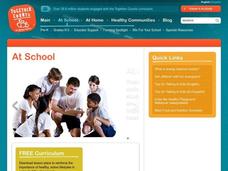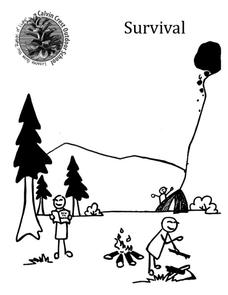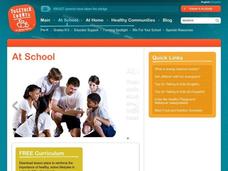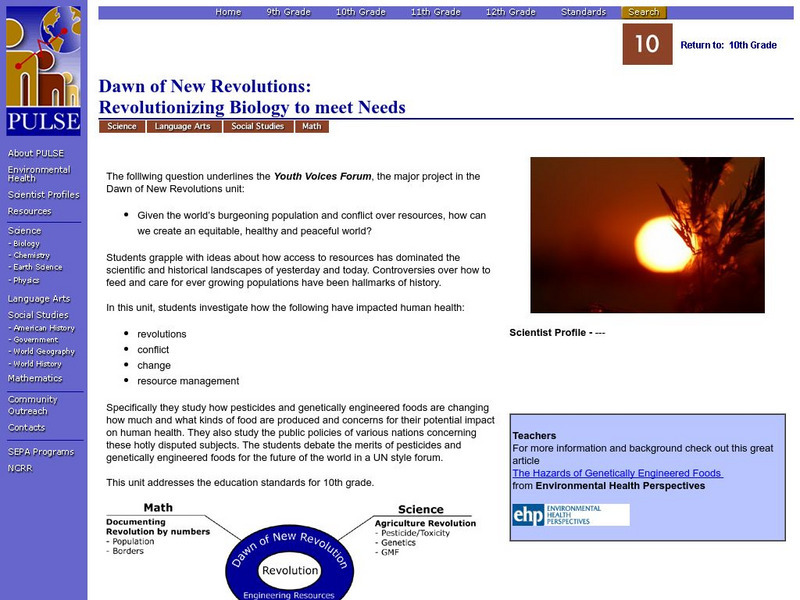Baylor College
Serving Sizes
Are serving sizes for different foods always appropriate for what you need? In this hands-on activity, learners work in groups to estimate what one serving size of various foods are, and then evaluate their hypotheses by measuring...
Curated OER
Energy Balance In Your Life
It's easy enough to put energy in, but not so easy to use it up! Look at food labels with your young learners and help them understand the concept of calories in and calories out. Food eaten means calories in and exercise means calories...
Curated OER
Balance Your Day With Food and Play
In this healthy living worksheet, students color a picture of a wild cat who is exercising in the park. Students find the 10 snacks and play things in the picture.
Curated OER
Gaming in the Outdoors
Students explore their environment through a scavenger hunt. For this outdoor exlporation lesson, students use hunt cards and search for animal food, natural shapes, or both. Students share their finds. Students create ink prints or...
Outdoor Learning Center
Outdoor Survival
Which of the following can you survive without for the longest time: water, food, or a positive mental attitude? The answer may surprise you. Guide learners of all ages through games, activities, and discussions about surviving in the...
Curated OER
Understanding MyPyramid
Fifth graders investigate serving sizes. In this serving size lesson, 5th graders study the food pyramid paying special attention to proper serving sizes of food. Resources are provided.
Curated OER
Our Many Shapes and Sizes
Students discover humans come in all shapes and sizes. In this equality lesson, students evaluate different bodies among their peers and discover no human body is "perfect". Students discuss different ways to keep their...
Curated OER
Exercise and Water
Second graders discover the needs of their body by trying different types of aerobic exercise. In this physical education lesson, 2nd graders analyze The Busy Body Book by glancing at the pictures inside and predicting what the...
Curated OER
Power Up To Gear
For this healthy living worksheet, students read a recipe for frozen peach ice pops. Students analyze two pictures of Power Panthers and circle the ten differences in the pictures.
Curated OER
Outdoor Survival
Young scholars are introduced to basic outdoor survival concepts. They identify the seven basic needs for survival. Students describe the symptoms and treatment for frostbite and hypothermia. They compare and contrast the value of...
Curated OER
Black Hawk Island Hike
Young scholars explore Wisconsin's natural and cultural history through hands-on exploration of Upham Woods. They are shown the basic paddling skills and they work in teams to paddle across the river on barge. Students describe cultural...
Calvin Crest Outdoor School
Survival
Equip young campers with important survival knowledge with a set of engaging lessons. Teammates work together to complete three outdoor activities, which include building a shelter, starting a campfire, and finding directions in the...
Curated OER
Full Esteem Ahead
Does having higher self esteem encourage learners to take better care of themselves? It absolutely does! Does having high self esteem mean that one likes everything about themselves? No, but that they like most things and can work to...
Curated OER
Physical Activity and Energy
Does smiling take as much energy as running a lap around the track? Everything the body does requires energy. The more vigorous the activity, the more energy the body requires to perform the activity. Compare different low-energy...
PBS
Pbs: In Defense of Food Curriculum
PBS: In Defense of Food Curriculum. It is designed to help adolescents develop something valuable:practical tools for healthier eating. It helps students learn why it is important to eat healthfully, investigate how food companies...
University of California
Ucla: Student Nutrition and Body Image Awareness Campaign
Students learn about food, nutrition, fitness, and how to balance health and college activities. Topics included are weight, fitness, diet, nutrition, and body image. The resource consists of information on workshops, classes,...
Other
Classroom Connections: Wallace & Gromit Veggie Power
This downloadable teaching resource for Grades 2-3 has lessons on healthy eating designed to encourage children to eat more vegetables. Young scholars explore their own and others' food preferences and learn about food groups.
National Institutes of Health
National Institutes of Health: Folate
A dietary supplement fact sheet about folate, which is also known as folic acid or vitamin B9. Learn about how this vitamin functions in the human body and how the body reacts when there is a vitamin deficiency or overdose. Providing...
National Institutes of Health
Nih Curriculum Supplement Series: The Science of Energy Balance
A great resource for teachers to help explain the balance between calorie intake and physical activity. There are many student activities that reinforce the need for physical activity in a healthy life style. Included are a teacher's...
University of Arizona
Pulse: Dawn of New Revolutions
A cross curricular unit focusing on how much and what kinds of foods are produced because of pesticides and genetically engineered foods. Students will investigate the impact on humans due to the new technology in food production. Topics...
PBS
Pbs Learning Media: Lesson 3: Claim Game
Using a clip from In Defense of Food and photos of food packaging, students uncover five "tricky techniques" companies use to sell food products. Then, students create plans to eat foods instead of phuds to avoid the allure of clever...
PBS
Pbs Learning Media: Lesson 7: Rooting for Plants
This is the first lesson in the "Mostly Plants" section. Students are introduced to the amazing variety of plant-based foods and relate that to MyPlate, our national dietary guidance. Watching a clip from In Defense of Food and learning...
PBS
Pbs Learning Media: Lesson 2: Chemical Cuisine
By exploring the ingredients in various foods and phuds, students experience first-hand how phuds are engineered to taste irresistible. Students learn and discuss a new Food Rule around eating foods with easily pronounceable ingredients.
PBS
Pbs Learning Media: Lesson 5: Supersized
In this lesson, students examine portion sizes and how our eyes, as well as food companies, may deceive us in estimating a healthy amount to eat. Through popcorn experiments, along with a clip from In Defense of Food, students learn how...


















